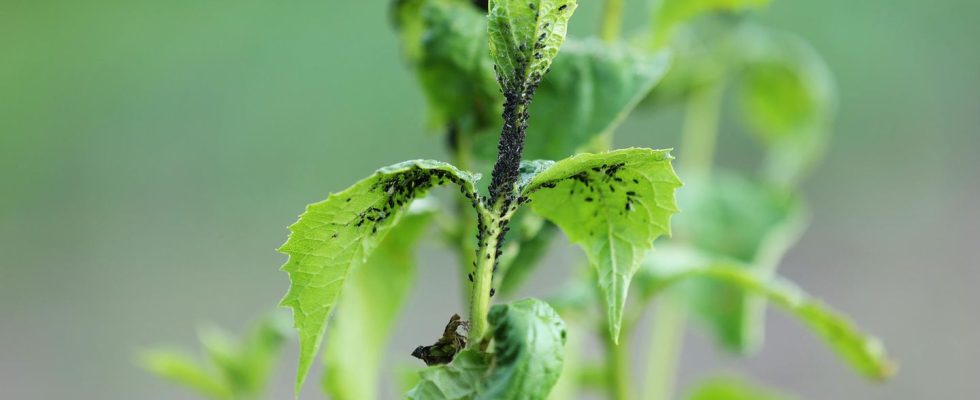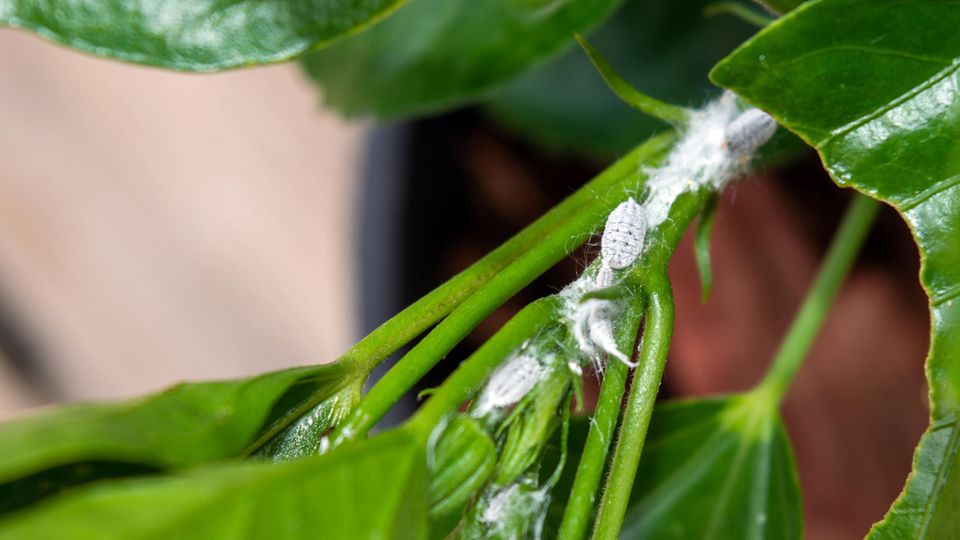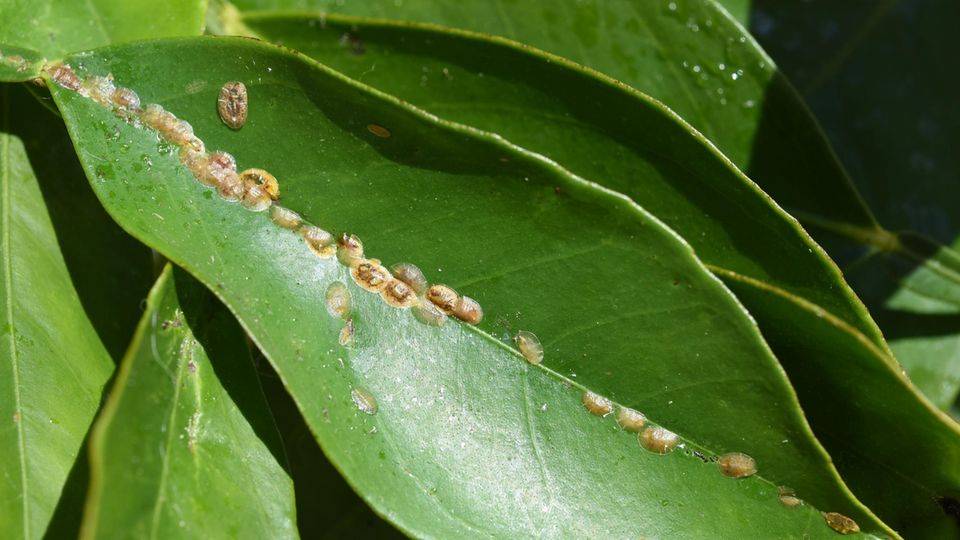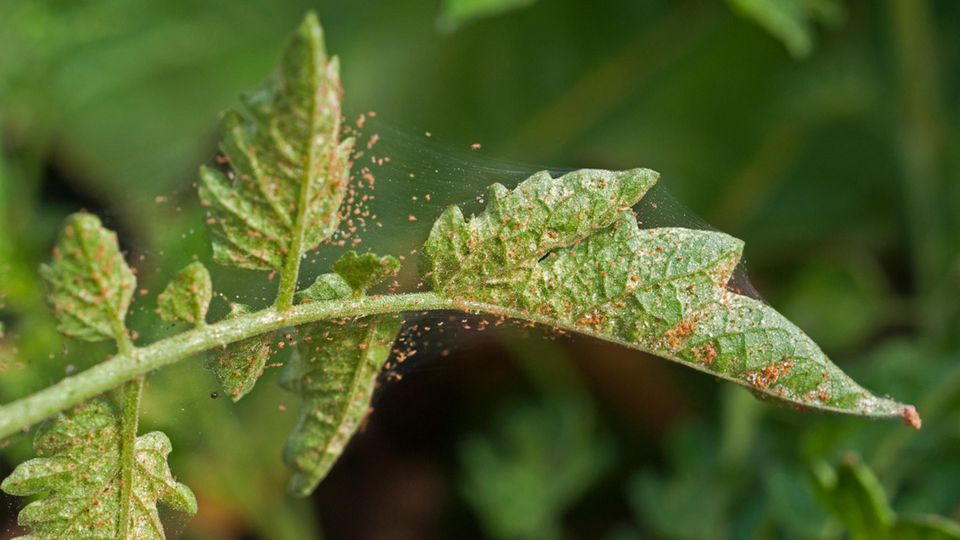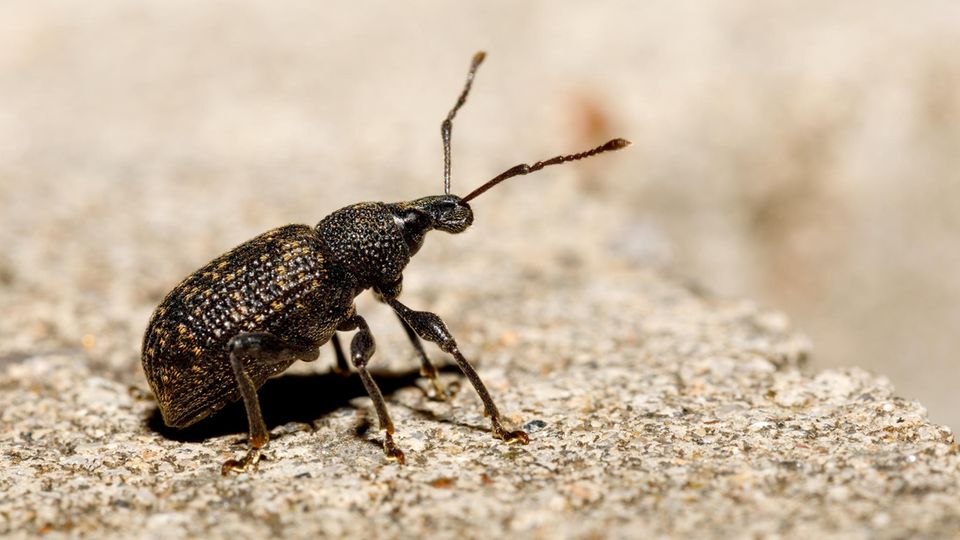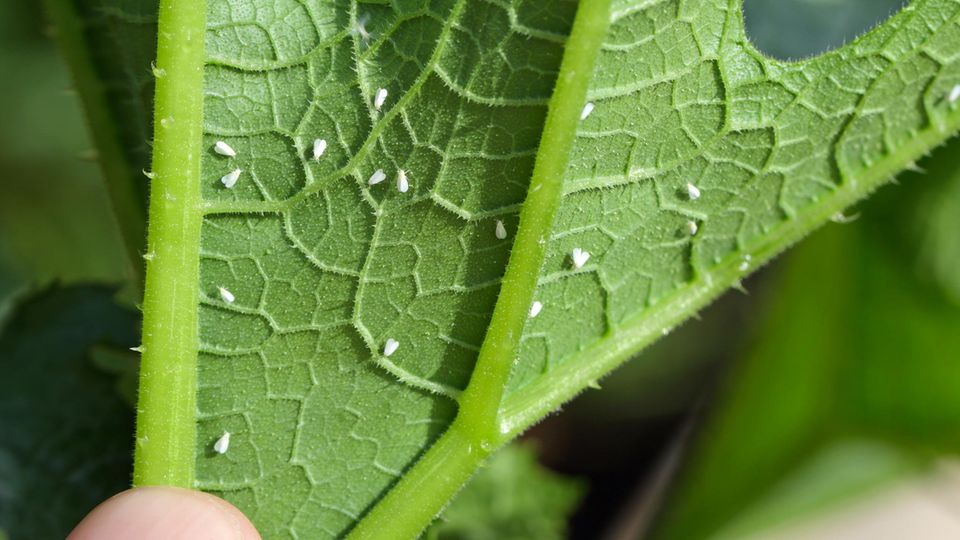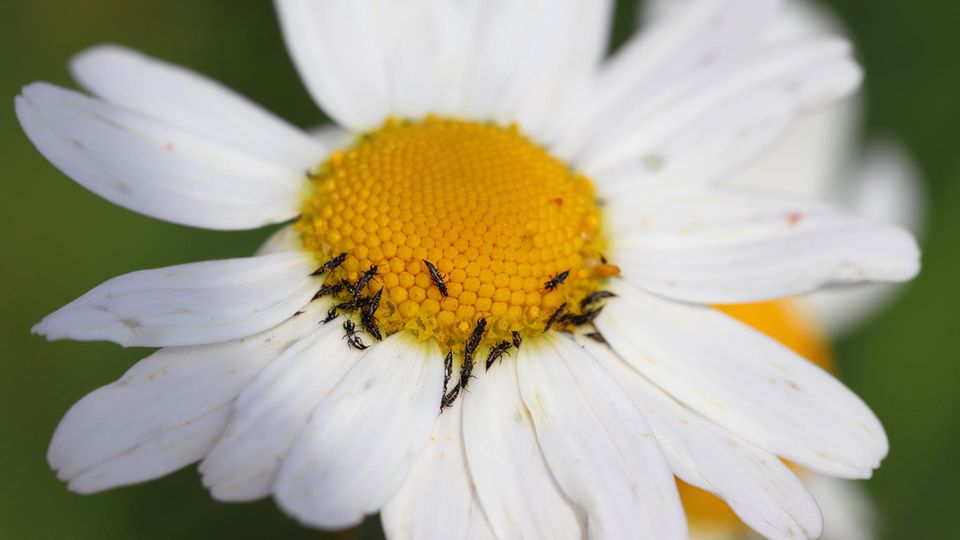It’s a law of nature: Where there are plants, there are pests. Whether in the greenhouse, on the windowsill or in the garden – no hurdle is too big, no path too far to enjoy the fresh greenery. We introduce you to nine of the most common “culprits” that you should know (better).
There are sucking and biting insects – or even those that are incorrectly called insects but are actually arachnids. What they all have in common is a healthy appetite for fresh leafy greens. And there are more than enough of them in summer. For this reason, we dedicate ourselves to the pests that are most often found in the home garden and give you useful tips for defense. Another important note in advance: Of course, this also includes molluscs such as snails and rodents such as voles, but in this article we would only like to focus on the smallest creatures that are usually not immediately discovered at first glance.
These are the most common pests in the garden
Aphids
If your plants are covered in small black or green, red or yellow dots, it is usually an infestation of aphids. The insects, which are just a few millimeters in size, suck the life out of every plant with their stinging proboscis and multiply rapidly. For this reason, their fast-growing colonies are easy to see with the eye – also because the pests prefer to attack young shoots and leaves. However, you will usually find what you are looking for when you check the undersides of your plants’ leaves or discover curled leaves. From spring to autumn. In order to successfully remove the sucking insects, special ones should be used Sticky traps, Combi sticks and (not dangerous to bees) Plant protection sprays be helpful. You can read here how you can fight aphids with natural predators or home remedies.
Mealybug Mealybugs suck on the leaves, stems and roots of a plant © Diane079F / Getty Images
They look like small cotton balls, but are anything but harmless: Mealybugs (also known as mealybugs), which belong to the scale insect subfamily, are usually found on the leaves, stems and roots of a plant. Their offspring often remain initially undetected, even though a female can lay up to 600 eggs in just eight weeks. Typical signs of infestation are – in addition to the white webs that cover them – the dying leaves of a plant. They curl up, turn yellow or fall off after a certain period of time. There are several options to combat the pests: Houseplants should be repotted and insulated. Natural predators are Lacewings or Parasitic wasps. Alternatively, there are also special ones Spray repellent against mealybugs. Or you can make your own nettle manure to strengthen the plants. More about that here.
Scale insects Scale insects target outdoor, greenhouse and house plants © emer1940 / Getty Images
Their brown, waxy secretion acts like a kind of oval protective armor, under which they suck on the leaves and shoots of house and container plants and thereby weaken them. Scale insects’ menu primarily includes orchids, palm trees, citrus trees, laurel and oleander – but as always, there are exceptions. If you discover the first insects, they can simply be wiped off with a wet cloth. Another indication of an infestation is the so-called honeydew: a sticky substance that is found on the leaves. If the scale insects multiply unhindered in spring or winter, it is time to act: In addition to using oily insects Plant protection products Beneficial insects such as the parasitic wasp (Metaphycus helvolus) are said to be used in the fight against Many different types of scale insects can be helpful.
Spider mites Spider mites are tiny, but their webs are easy to see © jess311 / Getty Images
Spider mites are also only a few millimeters in size and can hardly be seen with the naked eye. What is clearly visible, however, are their very fine webs that surround infected vegetable plants (usually tomatoes or cucumbers), as well as the consequences of their sucking attacks: small, white speckles or spots on the top and bottom of the leaves indicate the presence of the pests. To combat the arachnids, you can rinse the affected areas with water – but this method only helps with a light infestation. If a plant or fruit tree has already been severely infected, it is advisable to cut off the affected shoots and their leaves and dispose of them. Of course, the spider mites can be combated with predatory mites, predatory bugs and gall midges, which you can use Insect hotel lure you into the garden (read more about this here) – or treat them with Neem oil.
Cabbage white butterfly Whether cauliflower, kohlrabi or savoy cabbage: the caterpillars of the cabbage white butterfly are very hungry for cabbage vegetables © Benambot/Getty Images
Barely eaten leaf veins in the vegetable patch are a typical damage left by the offspring of the small and large cabbage white butterfly. The harmless-looking butterflies start looking for suitable places to lay their eggs in spring: they are usually cabbage, but rapeseed, field mustard or rocket are also possible. Between June and October, their caterpillars attack the vegetables en masse – and they do it anything but inconspicuously. In order to eliminate pests in the greenhouse, the use of parasitic wasps (Trichogramma) is said to be useful. In the garden, however, you can biological agents (Bacillus thuriengiensis) to keep the caterpillars at bay. Read here how to use the product and prevent cabbage white butterflies in the long term.
Boxwood borer The caterpillars of the box tree borer cause great damage if they are not discovered in time © Tomasz Klejdysz/Getty Images
Boxwood trees that have not yet been infected are in great danger from March onwards: the evergreen bushes are preferred by female boxwood moths to lay their eggs on. Until late summer, up to four generations hatch and attack the fresh foliage – first inside the plant, which is why the infestation is often not noticed at first. However, you should act at the latest when you discover white webs of the moth containing the larvae. Otherwise, the yellow-green caterpillars of the box tree borer will literally eat the bush bare, which can mean certain death for many plants. There are several methods to defeat the pest: by biological plant protection products to the promotion of their natural enemies. You can find even more tips on how to get rid of boxwood moth caterpillars and prevent an infestation here.
Black-mouthed weevil When it gets dark, the black weevil crawls out of its hiding place and attacks leaves, young shoots and buds © Artush/Getty Images
This beetle is also not a welcome guest in the garden: the black weevil is a pest that targets useful and ornamental plants. An infestation can be easily recognized by the cove-like holes that the nocturnal creature leaves behind. However, its larvae are much more dangerous than the superficial feeding damage – they prefer to attack the roots of a plant and thus cause long-term damage. The question arises as to how the infestation can be detected and combated if the beetles cannot be seen during the day and the larvae are underground? In fact, it makes sense to collect the animals by hand when it gets dark and they go looking for food. The offspring, on the other hand, can through the use of Nematodes be removed. Basically, it is recommended to attract the black weevil’s natural enemies (hedgehogs, moles, birds) into the garden. If you would like to learn more about the removal methods, you will find the answers here.
Whitefly Warm places (e.g. a greenhouse) are preferred by whiteflies, but they can also be found in the garden © Tomasz Klejdysz/Getty Images
Ornamental and vegetable plants don’t have it easy in summer: As soon as they put up their fresh foliage, they attract numerous pests – including whiteflies. These are actually whitefly insects, which get their name from their white wings. The infestation can be easily recognized if you inspect your vegetable beds more closely and the movements on the plants cause the flies to flee in small jumps to neighboring plants. Or you can discover the small, oval, mostly yellowish eggs of the whitefly, which are arranged in a circle on the undersides of the leaves. Since the pests and their offspring can cause serious damage to the plants, it is time to act: the use of pests is recommended in closed greenhouses Yellow boards and Parasitic wasps to reduce the infestation. In the garden, however, industrially produced or homemade sprays are said to be helpful. You can find out more tips on correct use and prevention here.
Thrips The thrips is a well-known pest that sucks the lifeblood out of plants © Tomasz Klejdysz/Getty Images
Their dark body is long and thin, only a few millimeters in size: Thrips (also called fringed winged winged beetles) are also sucking insects that can cause great damage to plants – just like their light green larvae. Both are usually found on the underside of the leaves, where the infestation usually becomes clear quite quickly: silvery-white damage caused by small holes in the plant through which air could get inside. Other indications that indicate a thrips infestation are their droppings (i.e. small balls of feces). Damaged plant shoots and reduced growth can also be caused by the pests. To combat insects, special ones should be used Blue boards be helpful. Alternatively, the use of Neem oil recommended. You can find out more tips on how you can fight thrips with home remedies and beneficial insects here.
You might also be interested in:
This article contains so-called affiliate links. Further information are available here.

